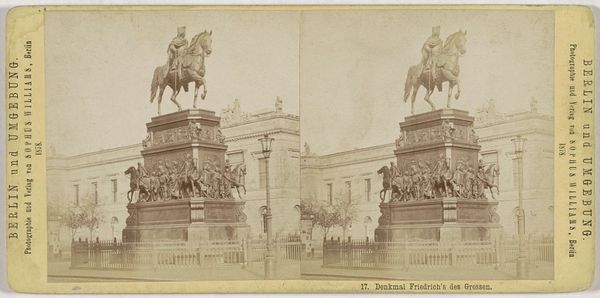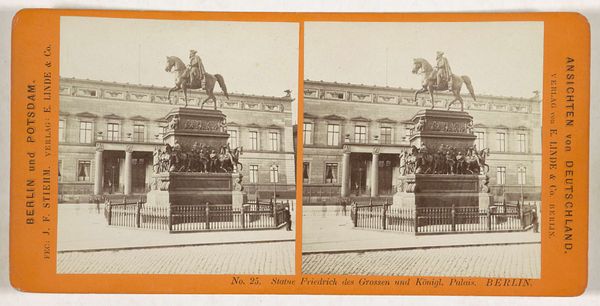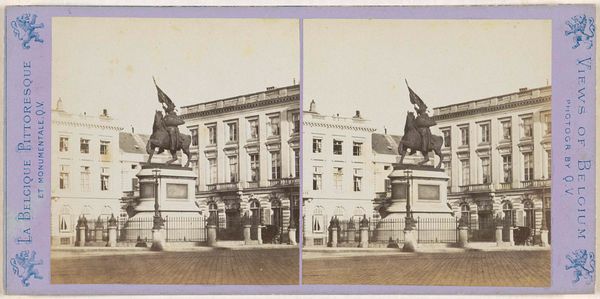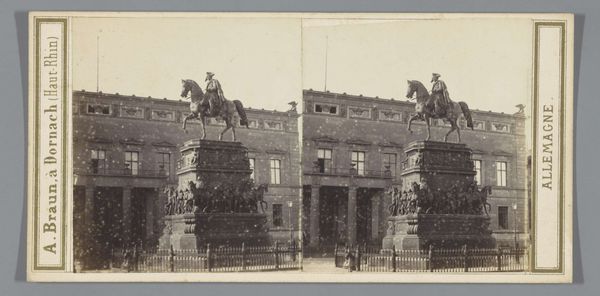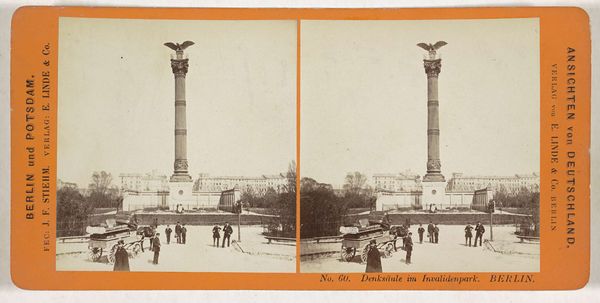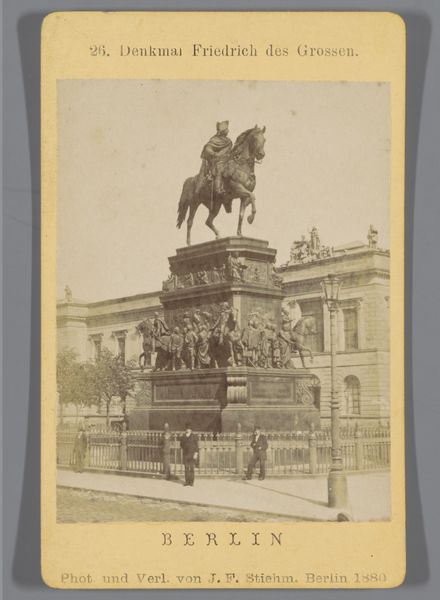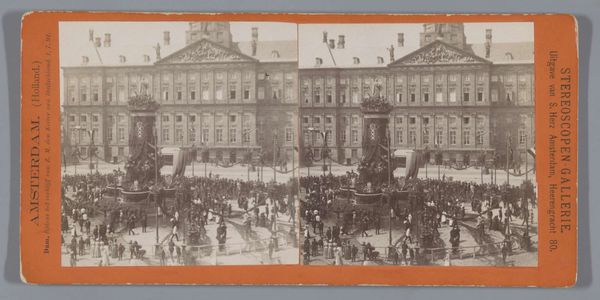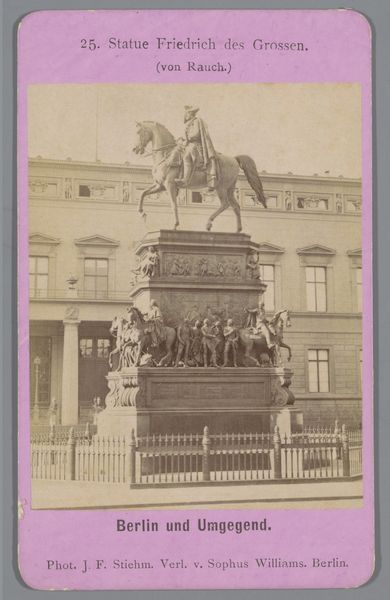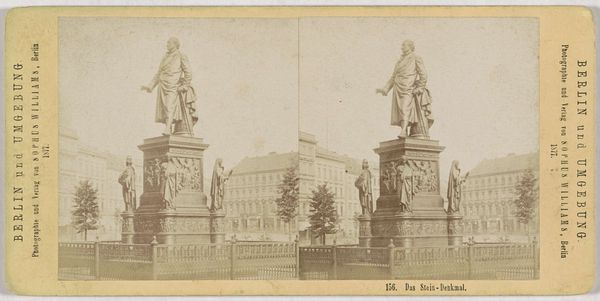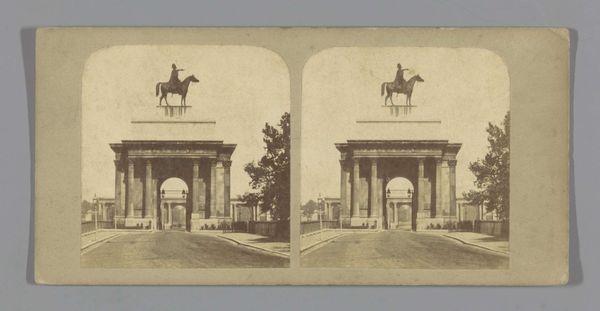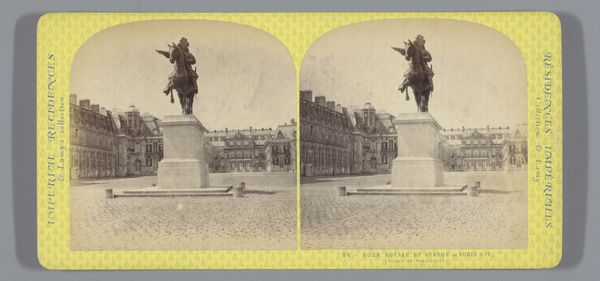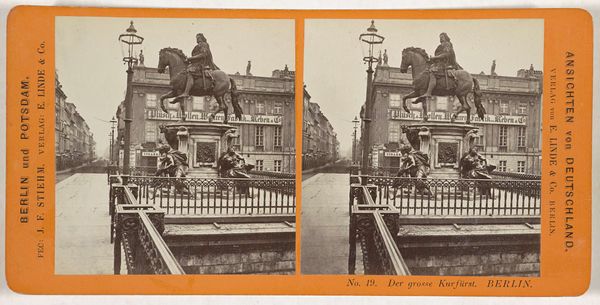
Ruiterstandbeeld van Frederik de Grote, Unter den Linden, Berlijn 1868 - 1870
0:00
0:00
Dimensions: height 86 mm, width 176 mm
Copyright: Rijks Museum: Open Domain
Editor: This photograph by Johann Friedrich Stiehm, taken between 1868 and 1870, showcases the equestrian statue of Frederick the Great in Berlin. It's a gelatin silver print, presented as a stereo card. I’m immediately struck by how the formality of the statue contrasts with the ordinary people in the foreground. What do you see in this piece, from your perspective? Curator: I see a carefully constructed icon designed to convey power and legacy. The equestrian statue is a powerful, recognizable trope. Beyond its literal representation of Frederick the Great, consider what that figure *means*: military prowess, enlightened leadership, Prussian identity. The photograph captures it during a period of intense national identity-building in Germany. Editor: It’s interesting to consider that idea of national identity being "built." It makes the people look like they're almost worshipping the statue. Curator: Observe how the monument is elevated, separated from the everyday bustle. This reinforces its status as something almost sacred, something to be revered and emulated. The people gathering at the base form a kind of audience or chorus. Consider the angle – is it trying to say something about Germany and it's future? Editor: That’s fascinating! It makes me think about how these kinds of monuments create, or solidify, certain national narratives, regardless of how complex history actually is. Curator: Exactly. The enduring appeal of an image or a statue lies in its ability to act as a visual touchstone for complex cultural concepts. What do you make of its placement in a cityscape? Editor: It seems very deliberate, as if Berlin is the right place, because Frederick is one with the city. It's a well-considered composition on Stiehm’s part. The inclusion of people, as well as other recognizable landmarks, adds more narrative depth and context, too. Curator: It reveals a specific cultural moment, reflecting ideas of national pride, leadership, and the enduring power of symbols. Thanks for bringing this perspective to our attention! Editor: Thanks for offering this way of reading an image in time.
Comments
No comments
Be the first to comment and join the conversation on the ultimate creative platform.
